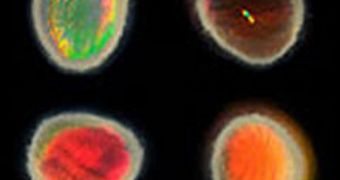A newly-developed nanoscale material could one day be used to tell if soldiers affected by a blast wave are at risk of developing post-traumatic stress disorder (PTSD), or if they were subjected to traumatic brain injuries following the event.
As the Iraq and Afghanistan rage on pointlessly and with little notable developments, thousands of soldiers return home affected by traumatic injuries to the brain, or suffering from PTSD.
This efflux of veterans has made neuroscientists and other researchers take an renewed interest in this series of conditions, and to seek solutions to treating them.
If that's impossible, the next best thing to do is to discover the onset of PTSD as early as possible. To this end, a team of experts has recently developed the new material, which can change colors when soldiers wearing them are subjected to blasts.
The color code the material is capable of could indicate the nature of the effects that the military personnel were subjected to. This approach was developed by experts at the University of Pennsylvania School of Medicine (UPSM).
Basically, what the material does is measure the magnitude and intensity of the explosion the soldier was exposed to. Readings can be taken repeatedly, such as for example when servicemen and women complete tours of duty n foreign theaters of operations.
This approach could also be used to determine the threshold for the damage the human brain can take before becoming traumatized, or before the onset of PTSD symptoms, Technology Review reports.
“Soldiers [with mild traumatic brain injury] can often appear normal, so it's critically important to have some kind of objective measure to denote which soldiers have been exposed to a blast that is powerful enough to cause brain injury,” explains Kacy Cullen.
“These devices wouldn't diagnose brain injury, but they would indicate who needs a more thorough workup, and could influence decisions about when a soldier can return to action,” adds the expert.
She holds an appointment as an assistant professor of neurosurgery at UPSM. The scientist was also the leader of the new research effort.
The expert explains that, when a bomb goes off, the first thing to hit soldiers is a supersonic wave, followed shortly by an overpressure wave. These waves, in addition to the blast force itself, are what damage the brain.
The new material responds to these special waves alone. “You can hit it with a hammer, and it won't change color. It will only break at the type of very-high-frequency Shockwave you might get in a blast,” says WUSM expert Douglas H. Smith.
“Ours is a materials-based indicator, so you don't need an internal power supply; the power from the blast induces the color change,” Cullen concludes.

 14 DAY TRIAL //
14 DAY TRIAL //